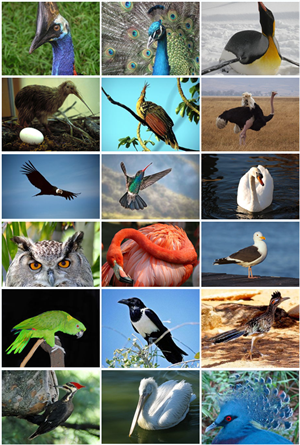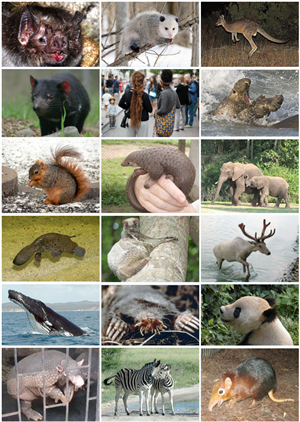
PUMPA - SMART LEARNING
எங்கள் ஆசிரியர்களுடன் 1-ஆன்-1 ஆலோசனை நேரத்தைப் பெறுங்கள். டாப்பர் ஆவதற்கு நாங்கள் பயிற்சி அளிப்போம்
Book Free DemoClass Aves:
These are warm-blooded animals. They are also known as birds. They live in diverse habitats such as deserts, mountains, forests, tundras, near bodies of water, etc. They use lungs as their respiratory organs and have a four-chambered heart. These are egg-laying animals.
Special features of Aves:
- The birds have waterproof skin that is covered with feathers
- Their two forelimbs are modified for flight
- They have a beak or bill instead of teeth
- They have a streamlined body so that they can fly easily by avoiding the resistance caused by air
- Their bones are hollow and pneumatic
Example:
Birds such as Ciconia ciconia (white stork), Aythya fuligula (male tufted duck), Struthio camelus (ostrich), pigeon, sparrow and crow

Class Aves
Class Mammalia
These are warm-blooded animals that are found in inland water and air. They use lungs as their respiratory organs and have a four-chambered heart.
Special features of Mammalia:
- Mammals have skin with hair, oil glands and sweat glands.
- They have mammary glands which produce milk to nourish their young ones.
- They give birth to their young ones directly. But a few of them, like the platypus and the echidna, lay eggs, and some, like kangaroos, give birth to very poorly developed young ones.
Example:
Homo sapiens (Humans), cats, whales, dogs, monkeys etc.

Class Mammalia
Reference:
https://upload.wikimedia.org/wikipedia/commons/d/d2/Bird_Diversity_2011.png
https://upload.wikimedia.org/wikipedia/commons/c/c3/Mammal_Diversity.png
https://upload.wikimedia.org/wikipedia/commons/c/c3/Mammal_Diversity.png